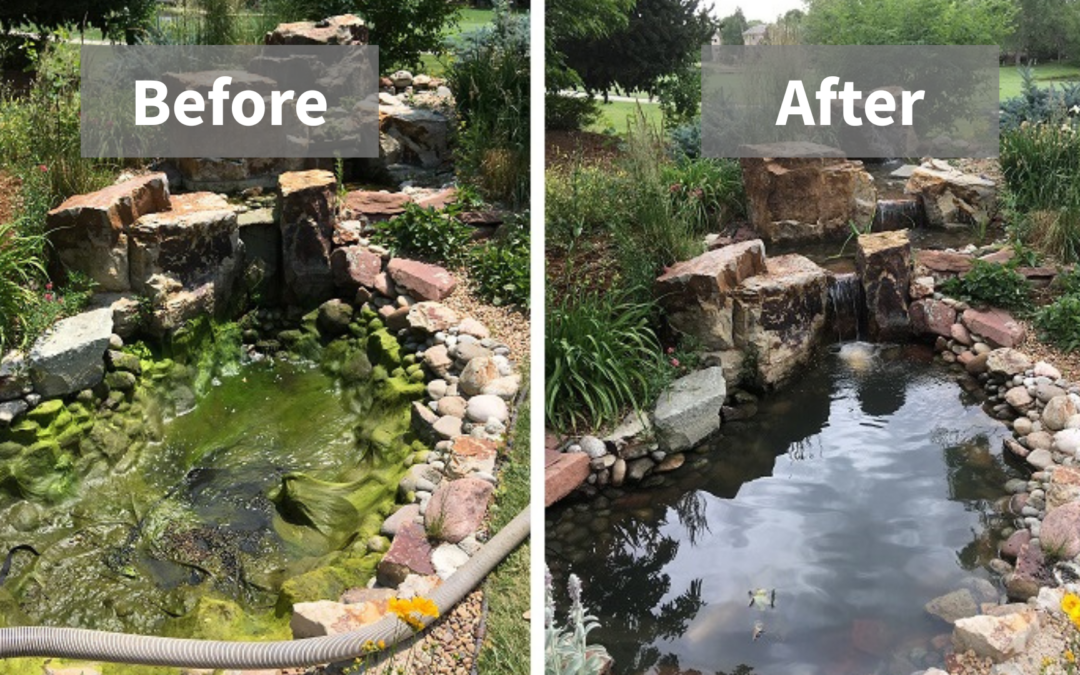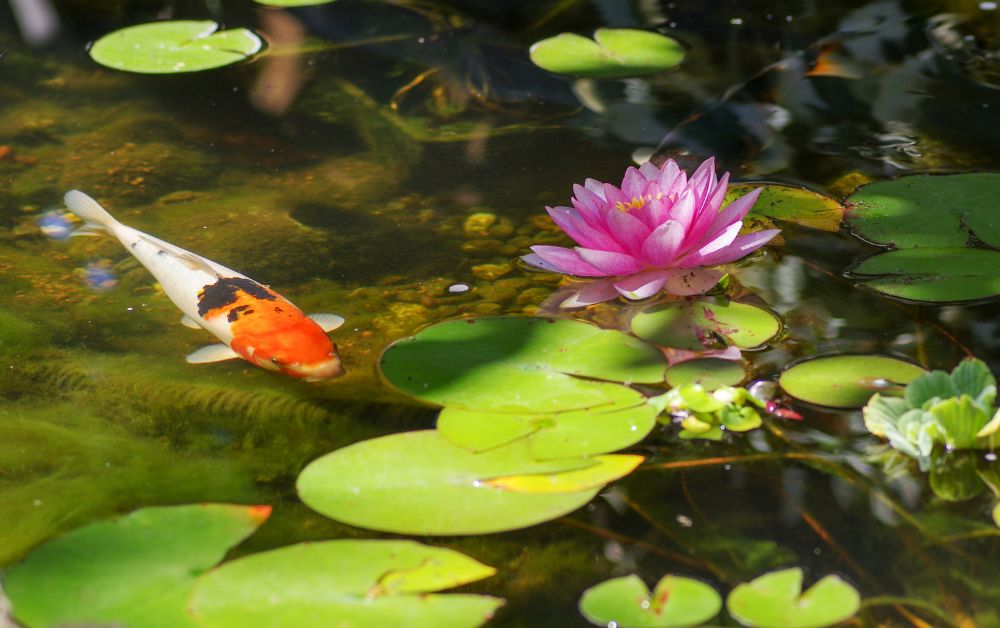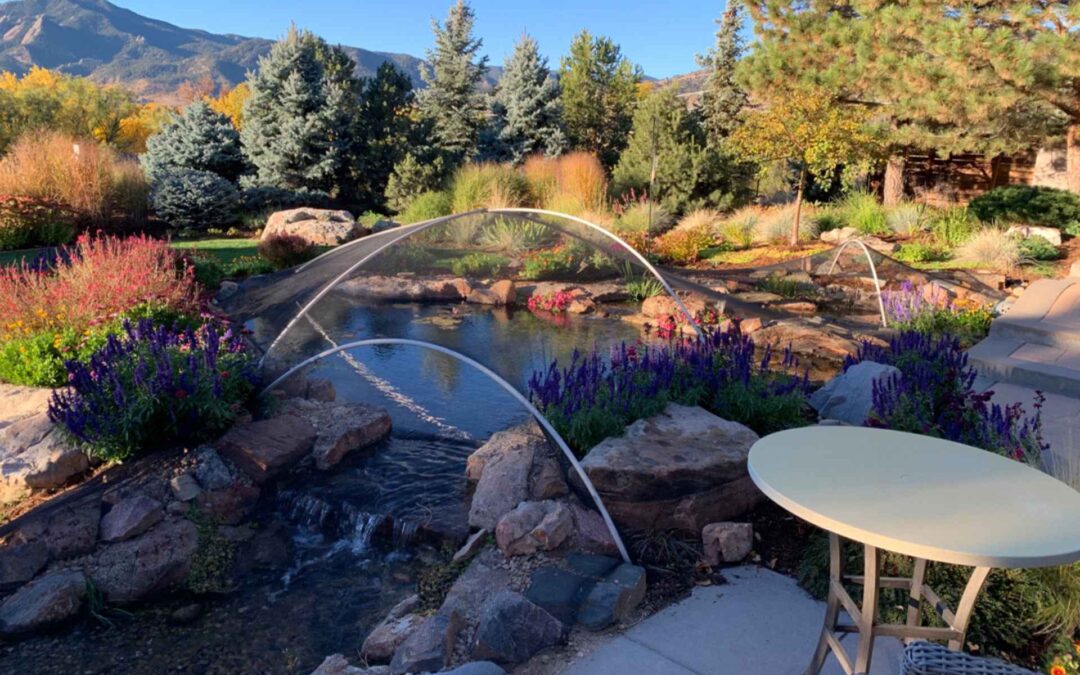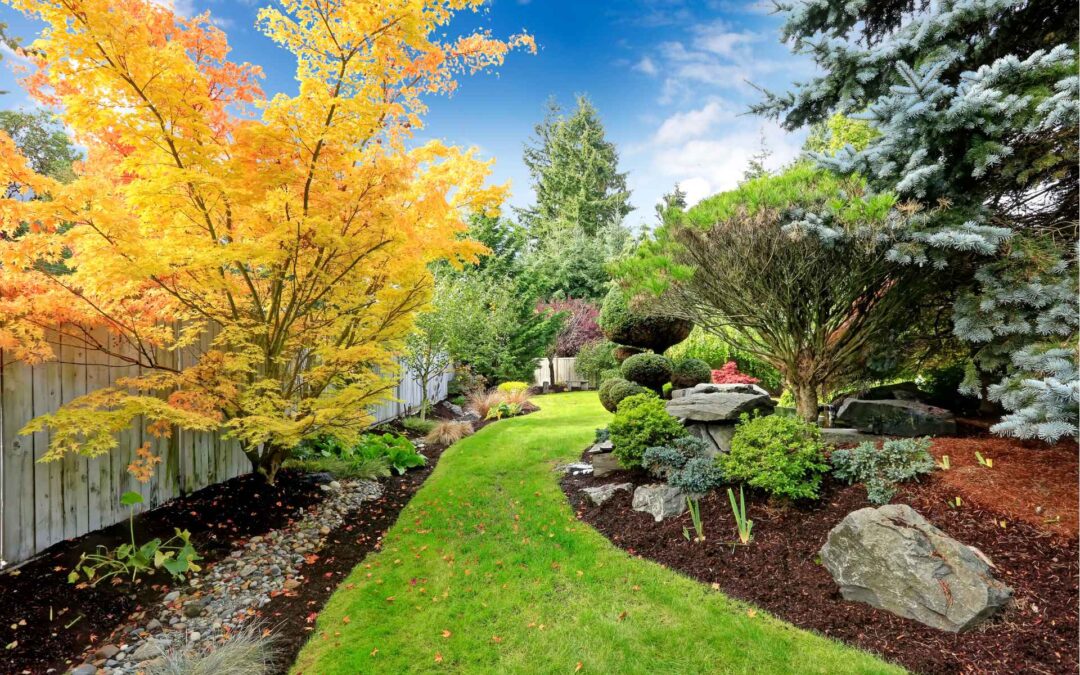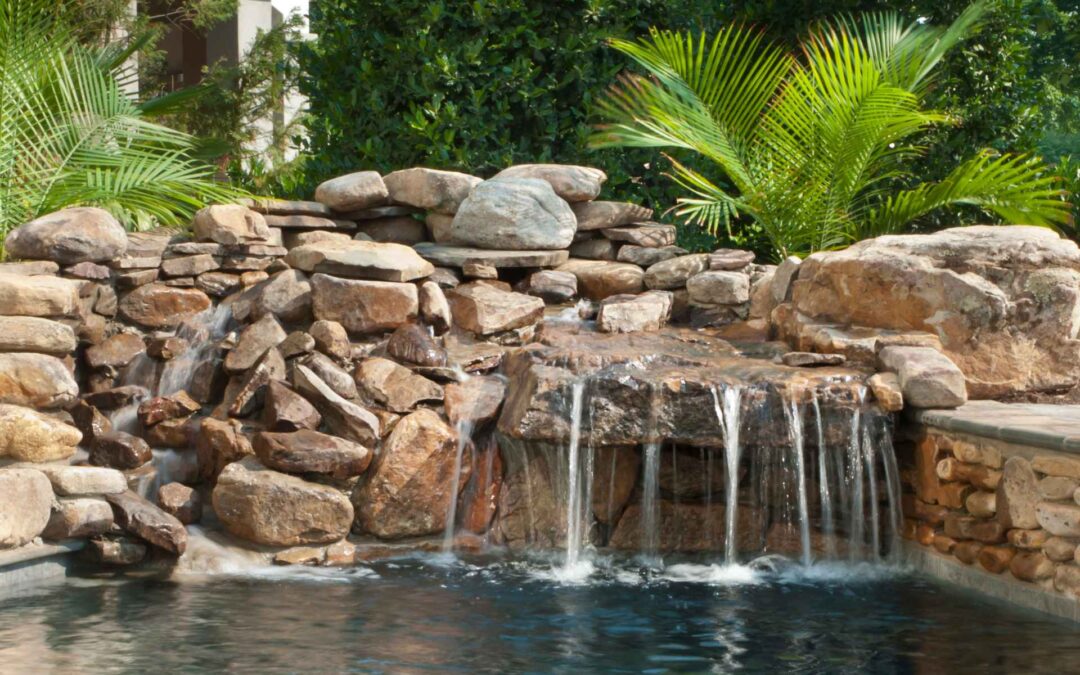Getting your pond ready for winter helps to keep it in the best condition possible and will help start the spring off on the right foot!
7 Steps to Getting Your Pond Ready for winter:
1. Decide if you will be running your pond over the winter
- Running the pond over the winter helps keep the fish healthy.
- If you have fish, they need to have air!
- Ponds and waterfalls look beautiful with snow and ice on them.
- Leaving a pond dry is not always a great idea. It can expose the liner to the freezing, thawing and harsh sun and wind that is so typical here in Colorado.
2. Leaves – Keeping them out of the pond
If your yard ends up with leaves in it, it is safe to say that your pond will too! Leaves that blow into the pond could cause several problems. They can muck up the skimmer basket or net, causing a blockage that could keep water from getting to your pump, and could even burn out your pump! They also begin to decay in your pond. Here in Colorado we have plenty of sunny days smack in the middle of the winter. Leaving organic material in the pond over the winter will cause algae.
- Rake up leaves and remove them from the yard – if not, they will end up in the pond!
- Put a net over your pond to keep them out. In our experience, a raised net that is over a sort of cage does much better than putting a net flat over the pond. The weight of the leaves causes it to sink into the water, allowing those tannins to get in.
- You can leave the net on until all the leaves have dropped. Make sure to remove all leaves from your yard before removing the net.
- Blow off leaves from your net every couple of days with a leaf blower.
3. Fish During the Winter
- Many people wonder if fish can overwinter in Colorado. They certainly can! Goldfish need only 18 inches of water to overwinter and Koi need a bit more than that. 24 to 36 inches is plenty.
- When the water temperature reaches 50° you need to stop feeding the fish. Their metabolisms slow down and they can no longer metabolize the food.
- The fish will be fine if the pond freezes over….mostly. There needs to be at least one hole in the ice for the fish gases to escape. The running water from the waterfall keeps oxygen flowing and usually keeps the pond from freezing over 100%. Many people add a floating de-icer to make sure – it keeps a small area on the surface from freezing.
- Refrain from breaking the ice by hitting it. Imagine if you were underwater….basically taking a nap and someone broke the ice over your head with a shovel! That would be a very loud noise and it can put added stress on your fish.
- Snow on top of the pond – you don’t need to remove the snow off a pond. But you do need to make sure a hole is left open for the fish gases to escape.
4. Pond Equipment
Some equipment needs to be removed for the winter, while other equipment will not need to be removed.
- UV lights need to be pulled out for the winter and stored in a place that they will not freeze. Leaving them in will cause them to break.
- Pumps – moving water does not freeze. If you have fish it is ok to leave the pump in for the winter and run it. Do not turn it off and leave it sitting or it can freeze, as well as the pipes attached to it. If you choose to pull out your pump for the winter, store it in a place where it won’t freeze. Putting it in a bucket of water helps keep it from drying out and getting cracked seals.
- IonGens – they can stay in over the winter. However, the IonGen control panel is a piece of computer equipment. Taking it out and storing it in the garage will keep it in better condition.
- Autodose – These need to come out for the winter. Their small tubes will likely freeze as well as the beneficial bacteria pouches. Frozen bacteria is dead bacteria! If you want to add beneficial bacteria specifically for 50 degrees and lower, you can add it weekly by hand.
- Aerator – a great thing to add to the pond for the winter, it helps ensure adequate oxygen. Keep in mind that the air stone should be on the top shelf of the pond – putting it in the very bottom will disturb the temperature of the water as the air is coming in from the very cold.
5. Ice
- Never crack or bang on the ice of the pond, it can stress out the fish.
- Keep an eye on the waterfall or stream – remove ice that may form across it because it can divert water out of the system.
6. Plants
- Hardy Lilies will come back in the spring. If you have a lily pot on an upper step, it is a good idea to move the lily to the lowest part of the pond. This keeps it at a better temperature.
- Marginal plants, the ones with their feet in the water will come back as long as they are hardy to zone 5.
7. Evaporation
Colorado is very dry in the winter! You will need to add water if it begins to get low to make sure your pump has enough water to keep on pumping. If you are adding small amounts of water (less than 20% of the total pond volume) then you don’t need to worry about adding a de-chlorinator. If you are adding a large amount at one time you will need to add de-chlorinator if you have fish. Chlorine in the water can burn their gills!
Would you like to read about more pond topics? Click HERE!
Would you like us to come winterize your pond or install a pond net? Give us a call today at 303-775-0224 or click CONTACT US.


